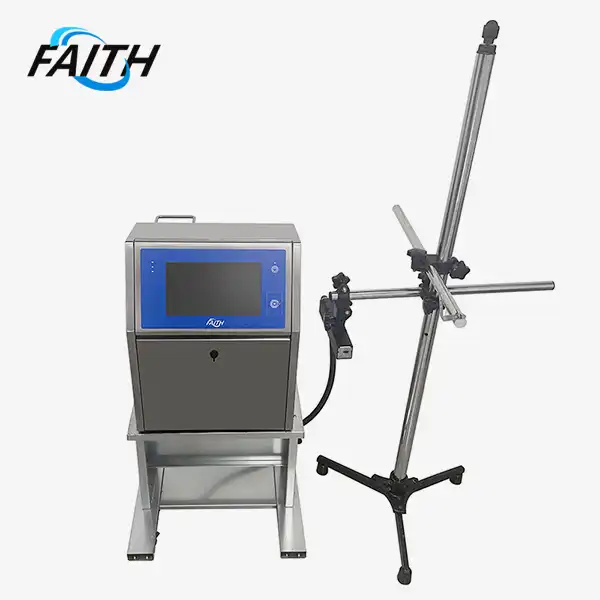Why Piezo Inkjet Technology is Changing the Printing Landscape?
In the ever-evolving world of printing technology, one innovation stands out for its transformative impact: Piezo Inkjet Technology. This groundbreaking approach to printing is revolutionizing industries across the board, from packaging and labeling to textile printing and beyond. As we delve into the intricacies of this technology, we'll explore how it's reshaping the printing landscape and why it's become the go-to solution for businesses seeking precision, versatility, and efficiency in their printing processes.
The Ingenious Mechanics Behind Piezo Inkjet Technology
At the heart of Piezo Inkjet Technology lies a fascinating interplay of physics and engineering. Unlike traditional printing methods, this technology harnesses the power of piezoelectric crystals to create incredibly precise and controllable ink droplets. These crystals, when subjected to an electrical charge, deform in a highly predictable manner, allowing for unparalleled control over ink dispensation.
The Piezoelectric Effect: Nature's Microscopic Pump
The piezoelectric effect, discovered over a century ago, is the cornerstone of this printing revolution. When electrical signals are applied to piezoelectric crystals within the printer's nozzles, these crystals respond by changing shape. This deformation creates a pressure pulse in the ink chamber, ejecting tiny droplets of ink with remarkable accuracy. The ability to control the frequency and amplitude of these electrical signals translates directly into control over droplet size, velocity, and placement.
Precision in Motion: The Dance of Droplets
As the piezoelectric crystals oscillate, they create a mesmerizing choreography of ink droplets. Each droplet is ejected with pinpoint precision, allowing for the creation of intricate patterns, sharp text, and vivid images. This level of control is particularly crucial in applications requiring high resolution, such as printing barcodes on pharmaceutical packaging or fine details on electronic components.
Versatility Unleashed: The Many Faces of Piezo Inkjet Printing
One of the most compelling aspects of Piezo Inkjet Technology is its remarkable versatility. This adaptability has allowed it to penetrate various industries, each benefiting from its unique capabilities in different ways.
A Rainbow of Possibilities: Ink Compatibility
Piezo Inkjet Technology boasts an impressive range of ink compatibility. From water-based inks ideal for eco-friendly food packaging to solvent-based formulations perfect for adhesion to plastics and metals, the technology adapts to diverse printing needs. UV-curable inks, which offer rapid drying and exceptional durability, find their niche in outdoor signage and long-term storage products. This flexibility in ink choice allows businesses to tailor their printing solutions to specific materials and environmental conditions.
Gentle Giant: Non-Contact Printing
One of the most underappreciated aspects of Piezo Inkjet Technology is its non-contact nature. The nozzles never physically touch the printing surface, making it ideal for delicate or uneven substrates. This gentle approach opens up new possibilities in printing on fragile materials like glass, ceramics, or irregularly shaped objects that might be damaged by traditional contact-based methods.
The Ripple Effect: How Piezo Inkjet Technology is Transforming Industries?
The impact of Piezo Inkjet Faith Printers Technology extends far beyond the realm of traditional printing. Its adoption is causing a ripple effect across various sectors, driving innovation and efficiency.
Manufacturing Marvel: Streamlining Production Lines
In manufacturing, Piezo Inkjet Technology is a game-changer. Its high-speed, high-precision capabilities allow for seamless integration into fast-paced production lines. From date coding on food packages to serialization of pharmaceutical products, this technology enables manufacturers to meet stringent regulatory requirements while maintaining productivity. The ability to quickly adjust printing parameters through software controls adds a layer of flexibility that's invaluable in today's dynamic manufacturing environments.
Textile Revolution: Printing the Fabric of Innovation
The textile industry has embraced Piezo Inkjet Technology with open arms. Digital textile printing using this technology has transformed the way fabrics are designed and produced. It allows for shorter runs, customization, and rapid prototyping – features that are particularly valuable in the fast-paced world of fashion. The precision of Piezo Inkjet printing also enables the creation of intricate patterns and photorealistic prints on fabrics, opening up new avenues for textile design.
Packaging Perfection: Elevating Brand Experiences
In the competitive world of consumer goods, packaging plays a crucial role in brand differentiation. Piezo Inkjet Faith Printers Technology allows for high-quality, variable data printing on packaging materials. This capability is particularly valuable for personalized marketing campaigns, limited edition products, and track-and-trace systems for supply chain management. The technology's ability to print on a wide range of substrates – from cardboard to plastics – makes it an versatile tool in the packaging designer's arsenal.
Conclusion
As we look to the future, it's clear that Piezo Inkjet Technology will continue to play a pivotal role in shaping the printing landscape. Its combination of precision, versatility, and efficiency makes it an indispensable tool across a wide range of industries. From enhancing product traceability to enabling new forms of creative expression, this technology is opening doors to possibilities that were once thought impossible.
The printing world is on the cusp of a new era, driven by the innovative potential of Piezo Inkjet Technology. As businesses and industries continue to discover new applications for this versatile technology, we can expect to see even more groundbreaking developments on the horizon.
For those looking to harness the power of Piezo Inkjet Technology in their operations, expert guidance is crucial. Shenyang Faith Technology Co., Ltd. specializes in providing industrial UV inkjet coding and traceability system solutions, leveraging over a decade of experience in the inkjet printing industry. To explore how Piezo Inkjet Technology can transform your printing processes and drive your business forward, reach out to our team of experts at sale01@sy-faith.com. Let's print the future together.
References
1. Wijshoff, H. (2010). The dynamics of the piezo inkjet printhead operation. Physics Reports, 491(4-5), 77-177.
2. Hoath, S. D. (Ed.). (2016). Fundamentals of Inkjet Printing: The Science of Inkjet and Droplets. John Wiley & Sons.
3. Zapka, W. (Ed.). (2017). Handbook of Industrial Inkjet Printing: A Full System Approach. John Wiley & Sons.
4. Magdassi, S. (Ed.). (2009). The Chemistry of Inkjet Inks. World Scientific.
5. Kettle, J., Lamminmäki, T., & Gane, P. (2010). A review of modified surfaces for high speed inkjet coating. Surface and Coatings Technology, 204(12-13), 2103-2109.
Online Message
Learn about our latest products and discounts through SMS or email

_1756276755484.jpg)
_1756276903932.jpg)
